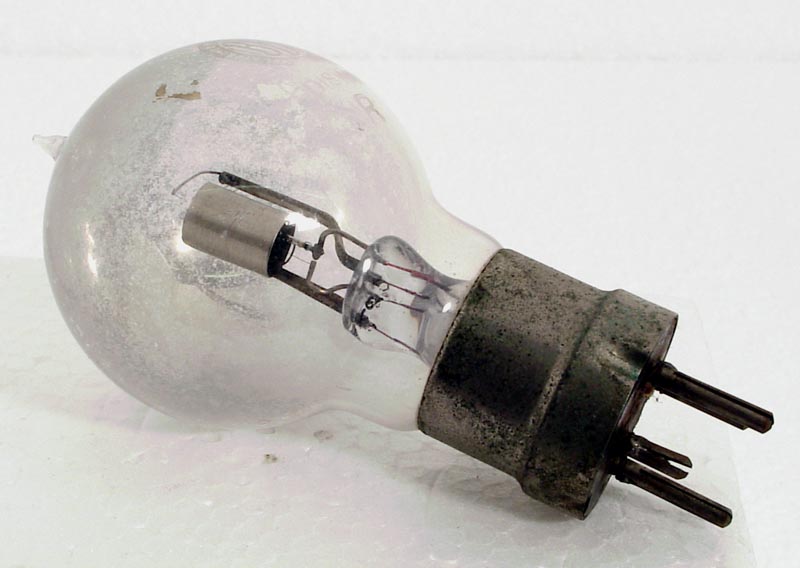|
R TypeSensibly equivalent¶ to:See also:
|
|
|

|
This is a version of the Type R made by Ediswan for the domestic radio market in around 1923 (note the large style of BBC stamp). Most later Ediswan Rs for the domestic market were tubular and gettered, and were sold as Type AR. In order to fit the electrodes into a tubular glass envelope no wider than the base cap it was necessary to redesign the structure in a vertical format. This exhibit exemplifies only the first stage of the redesign process and probably comes from a batch intended to test the new filament tensioning system 'under field conditions' (ie by selling them to unsuspecting customers and waiting to see whether anyone screamed. The Type AR version sold well and survives in some quantity although rarely with filament intact.This triode was used by the RAF. It is unusual in an R type in that the electrode assembly is held vertically. Also the supports are neat and minimal.The envelope is partially silvered inside, and demonstrates that the valve is gettered. The filament is a single thread and is spring loaded. The grid is a bright wire helix fixed to a single vertical rod support. The anode is a bright cylinder fixed to the pinch by a single stout support.The base pins are of unequal length and this arrangement forms the Ediswan safety cap. See ARDE for details.The balloon envelope is 52 mm in diameter, and excluding the B4 base pins, is 94 mm tall.References: Private correspondence, box & 1003 Type R Type was first introduced in 1916. See also 1916 adverts. |
Pin Connections
| 1 | 2 | 3 | 4 |  a | g1 | f | f |
|
|
Absolute Maximum Operating Conditions¶
| Vh | Ah | Va | 
| 4.0 | 0.76 | 100 |
|
Updated August 07, 2019.
|
|